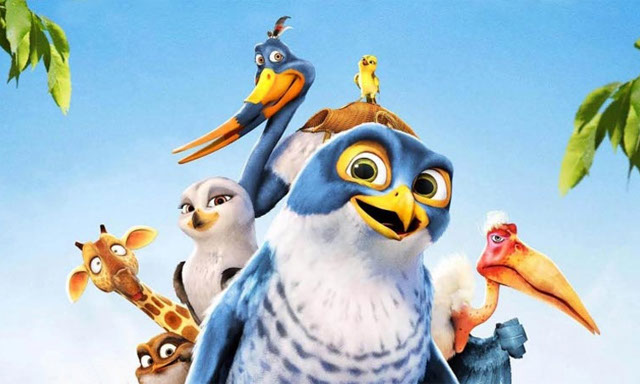
Film: Adventures in Zambezia
Country: South Africa
Year of Release: 2012
Director: Wayne Thornley
Screenwriters: Camilla Bubna-Kasteliz, Andrew Cook, Raffaella Delle Donne and others
Starring the voices of: Samuel L Jackson, Jeremy Suarez, Leonard Nimoy, Jeff Goldblum, Richard E Grant, Abigail Breslin
♥♥♥
Adventures in Zambezia is a locally produced 3D animation with the grandiose ambition of taking on the animation giants of Dreamworks and Pixar on the global stage. The product of Capetown-based animation studio Triggerfish, the film features an international cast of big-name voices, and succeeds to a moderate degree in its intentions, although its triumph is greater in narrative than in technical terms, something which shouldn’t come as a surprise given the massive resources of technical and artistic talent to which the two American monoliths have access. Nonetheless, Zambezia is more successful than could reasonably bw expected as a first-time outing and promises greater things to come from Triggerfish.
The film tells the story of a young and highly excitable falcon named Kai (voiced by Jeremy Suarez) who lives a lonely and overly protected life in the African wilderness, courtesy of his grumpy yet caring single father Tendai (Samuel L Jackson) who has trained Kai to be a remarkably virtuous if somewhat foolhardy flyer. When Kai encounters the cooky Gogo (Jennifer Lewis) and her copilot, a cute little weaver bird named Tini (Tania Gunadi), who are on their way to the mythical bird paradise of Zambezia, a place that his father abandoned many years ago for reasons that he refuses to acknowledge, Kai’s suspicions that there must be more to life are confirmed.
Having made his way to Zambezia, the young falcon finds that is indeed a paradise, although one marred by the threatening existence of a gang of particularly vicious Maribou stalks. In this new land, Kai finds the opportunity to prove himself and also discovers the origins of the dark secret that haunts his father. The resulting storyline involves familiar aspects of redemption and salvation but does so with a language that attempts – not always successfully – to defend itself against too many narrative cliches.
Zambezia doens’t achieve the visual lushness of Pixar films such as Monsters Incorporated or Up or Dreamworks films such as Shrek and Madagascar. Given the remarkable heights to which those studios have risen, the film’s animation is, by comparison, a little scrappy, but at the same time far exceeds the work of many other animation studios from around the world. Where the film succeeds with the most panache is in its storytelling technique, successfully telling an African story with global appeal.
In the past decade I have written frequently about the fact that the animated films which emerge from the United States, particularly those of Pixar, are generally far more emotionally convincing than the bulk of that country’s cinematic output. And, similarly, Zambezia packs an emotional punch that exceeds that of most South African live action films. That said, it doesn’t begin to achieve the nuanced delights of Pixar’s screenwriting, although I thought that its storytelling in many ways surpassed the output of Dreamworks, which has always seemed overly content to locate its films in a world that is more ironic than emotionally real.
Yet what is most markedly absent in Zambezia is the kind of parallel humour that will satisfy adult viewers who are watching the film with their kids. So while its narrative arc is more-or-less satisfying, the texture and depth of that narrative leaves a little to be desired. Where Zambezia succeeds with the greatest vigour is in utilising its three dimensions with aplomb, creating a real sense of depth, as opposed to the planar layers with which many 3D films content themselves.
In the wake of Adventures in Zambezia, Triggerfish’s next production is Khumba, a tale of a marginalised Zebra who is born with only half his stripes. It seems likely that, with Zambezia, the studio is just warming itself up, and that their next film will take their output to greater heights. The studio certainly deserves at least a modest success with their debut outing and I hope that the film is a commercial success beyond the borders of both South Africa and the continent.
© PETER MACHEN 2017